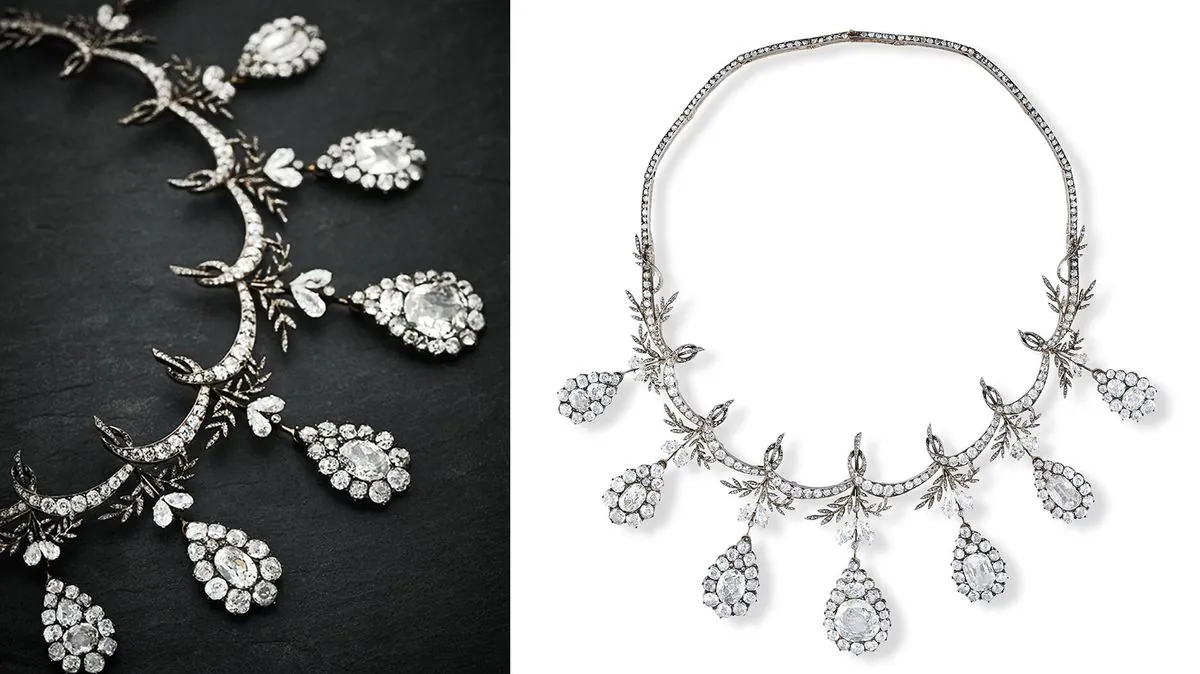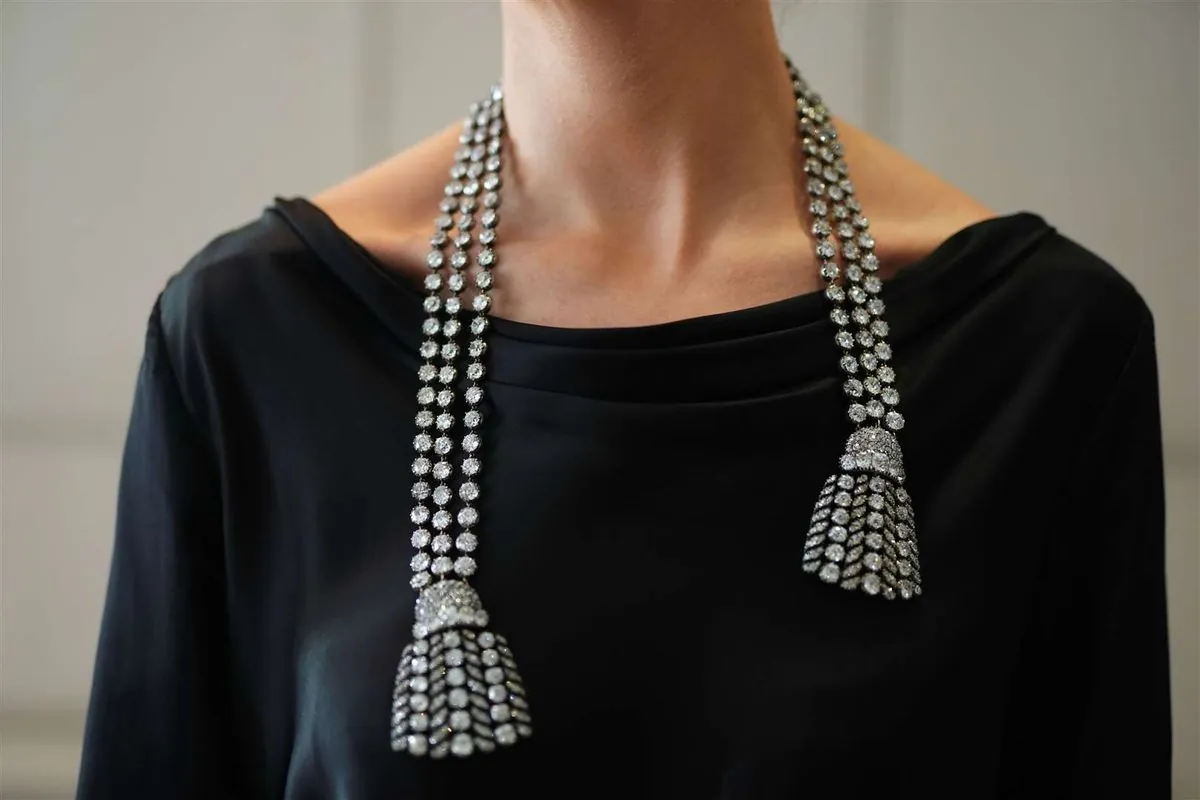Historic 300-Carat Diamond Necklace Set for Million-Pound Auction
A rare 18th-century diamond necklace, worn at two British coronations and possibly linked to Marie Antoinette, is expected to fetch over £1 million at Sotheby's. The 300-carat piece will be exhibited globally before the November auction.

A remarkable piece of jewelry history is set to captivate collectors and enthusiasts alike. An 18th-century diamond necklace, boasting approximately 300 carats, is slated for auction with an estimated value exceeding £1 million. This exquisite piece, which has remained out of public view for five decades, carries a rich historical legacy.
The necklace's provenance is particularly noteworthy, having graced two British coronations. Members of the Marquess of Anglesey family wore it during the coronation ceremonies of both King George VI in 1937 and Queen Elizabeth II in 1953. These events marked significant moments in British history, with George VI ascending to the throne following the abdication crisis and Elizabeth II beginning her record-breaking 70-year reign.
Intriguingly, the necklace may have a connection to one of history's most infamous jewelry scandals. Some experts believe it incorporates diamonds from the necklace at the center of the "Affair of the Necklace" involving Marie Antoinette. This 1785 incident, which occurred just four years before the French Revolution, saw the French queen falsely accused of failing to pay for an extravagant piece of jewelry, damaging her reputation.

The necklace's design is a testament to 18th-century craftsmanship. It features 500 diamonds arranged on three ropes, culminating in naturalistic diamond tassels. While its exact origin remains uncertain, it's believed to have been created in the decade preceding the French Revolution, likely for royalty or high-ranking aristocracy.
Andres White Correal, chairman and head of royal and noble sales at Sotheby's for Europe and the Middle East, emphasized the necklace's rarity:
"I think that the most important part, other than the value of the diamonds, is the fact that it has survived. You only see these things in museums when it has been from royal families who are still reigning, like the collections here in Britain, or when you go to former imperial and royal collections in places like St Petersburg or Moscow, where you can see the collections of the Tsar."
The necklace's survival is indeed remarkable, considering the turbulent history of many royal jewels. For comparison, the largest diamond in the British Crown Jewels, the Cullinan I, weighs 530.2 carats, while the famous Hope Diamond is 45.52 carats.
Before the auction on November 11, 2024, at the Mandarin Oriental in Geneva, the necklace will embark on a global exhibition tour. Stops include Sotheby's London, Hong Kong, New York, Singapore, Taipei, and Dubai, allowing jewelry enthusiasts worldwide to appreciate this historical treasure.
Correal expressed hope that the necklace will find a home where it can be properly appreciated, whether in an institution for public viewing or in a private collection that understands its significance as a cultural artifact. This aligns with the concept of custodianship in art, where individuals or institutions care for and maintain important pieces for future generations.
As the first international jewelry exhibition was held in London in 1851, it's fitting that this extraordinary necklace will once again be on display, bridging centuries of jewelry craftsmanship and history.


































